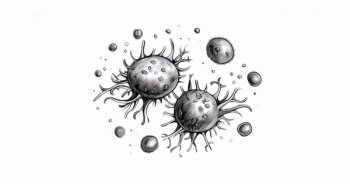
Ladbury Discusses Advancements in Total Marrow Irradiation

Colton Ladbury, MD, discusses radiation therapy for hematologic malignancies, total marrow irradiation, and findings that were presented during the American Society for Radiation Oncology Annual Meeting.
Colton Ladbury, MD, a radiation oncologist and assistant clinical professor in the Department of Radiation Oncology at City of Hope, discusses radiation therapy for hematologic malignancies, total marrow irradiation (TMI), and findings that were presented during the American Society for Radiation Oncology (ASTRO) Annual Meeting.
Transcription:
0:10 | Radiation has been used historically as part of the conditioning regimen for patients undergoing transplants for hematologic malignancies. That has been done for decades. It is very non-targeted, called total body irradiation for a reason as it treats the entire body.
0:33 | At City of Hope, somewhere around 2006, we started a different technique called total marrow irradiation where they thought, [if a patient has] leukemia, we do not need to treat the entire body. We probably need to just focus on either the bone marrow plus or minus the lymph nodes. Around that time, there were advances in radiation technology that made it possible to focus on those parts and spare other parts of the body.
0:59 | That was something that we have been doing more of since we can decrease toxicities by not giving radiation to the parts of the body that do not necessarily need it, and by not having as much toxicity, we may be able to go to a higher dose of radiation, which may have better efficacy against leukemia.
1:30 | This was all theoretical at first. We previously looked at a small group of patients who have been treated with TMI to look at their toxicities, but what this abstract was trying to do is double that number of patients and have a little bit more long-term follow-up to look at if we are reducing toxicity compared with historical controls, and what are the unmet needs that we still need to look for in terms of long-term toxicities?









































